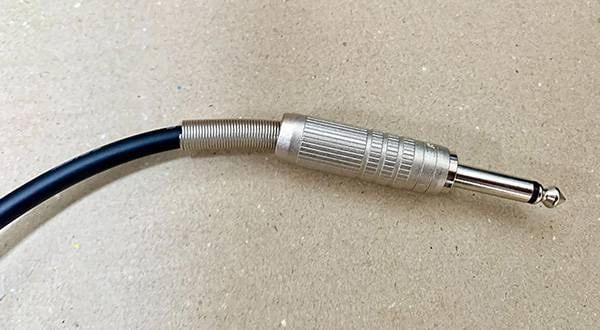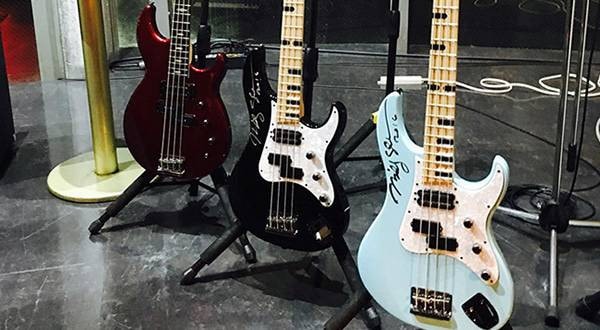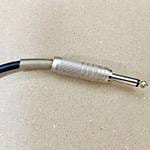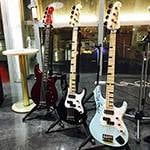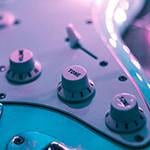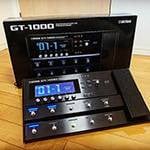It's been a hot day these days, but humans aren't the only ones in this environment. This time, I would like to talk about the effects of the environment on the guitar (mainly acoustic guitar) and the principles behind them.

Part 1. The close relationship between humidity, temperature and the guitar
Speaking of humidity, temperature, and acoustic guitars, they have an inseparable relationship But to learn what kind of changes will occur in the guitar under what kind of environment, I will first set the standard as a room temperature of about 25°C, and relative humidity (* 1). I will explain based on this standard. The numbers below are for reference only and you don't have to be too concerned except in extreme cases. Please think about this kind of thing./p>
It is assumed that the musical instrument itself is manufactured in an environment with a temperature of 22 to 25 ° C and a humidity of around 50% in accordance with the standards of general factories.
○ Humidity 45-55% = comfortable
It's a very comfortable environment for a guitar. It can be said that it is unlikely that an abnormality will occur unless the air-conditioning wind and direct sunlight are taken into consideration and the environment changes significantly, such as leaving it near a window, or in an extreme temperature. It is even better if you hang it on a wall-mounted hanger to store it! It is an environment that maximizes the performance that you originally have in terms of essential sound and operability.
Now let's lower the humidity from here.
○ Humidity 40-44% = Slight changes due to drying may start to appear
A little dry from the safe humidity (above). Although the level of "no immediate effect" is valid, it’s not good if this environment continues. Specifically, if left for a few days, the neck will start to warp slightly. However, depending on the setting and finish, the strings may rattle when played.
○ Humidity 35-39% = moderately dangerous
As drying progresses, the neck will warp more and the strings will become rattle more. In the case of an acoustic guitar, the top will start to sink and the string height will start to drop (to an abnormal state). If left for a few days, and the edges of the frets begin to stick out of the fingerboard and will contact your fingers and hand as burrs.
○ Humidity 25-34% or less = Very dangerous
This is pretty dangerous. Even urethane-coated acoustic guitars, which are said to have excellent durability, can crack anytime and anywhere unless they are plywood. The neck also warps extremely, and it will surely crack.
○ Humidity 24% or less = The End
Finished (as far as being a playable instrument). Unless you're very lucky, you can assume that most acoustic guitars will break in these conditions. The reverse warp of the neck is also extreme, and it is no longer fixable. It's not just rattling strings, and in some cases there be no sound.
In most cases, it changes like this, basically
- The neck warps backwards
- (In the case of acoustic guitar) The top sinks. Or cracks.
I will follow the process.
On the contrary, let's see what happens when the humidity is too high.
○ Humidity 56% -65% = The adverse effect of humidity may appear slightly
Humidity, like 40-44%, is not yet that severe. However, the neck begins to warp slightly, and in the case of acoustic guitar, the outline of the sound begins to blur. It's a good idea to start adjusting the environment little by little, paying attention to sudden changes so that you can return to the proper range as soon as possible.
○ Humidity 65%-70% = relatively dangerous
I'm starting to step into a dangerous environment, the neck is warping and the strings are getting higher. The top also begins to bulge and the string height increases. In addition, the outline of the sound will be more blurred. From this area, there is a concern that the durability of the adhesive will decrease in the long run.
○ Humidity 71-80% = Very dangerous
It's very dangerous. The neck is completely warped, the top swells to unspeakable levels, and in rare cases each part gets distorted and becomes a pseudo-high rising state (a phenomenon in which the neck rises from the base of the joint into a dogleg). The outline of the sound is completely blurred. The adhesive will begin to loosen, increasing the likelihood that the braces, bridges, etc. will begin to come off.
○ Humidity 81% or more = New life sprout
As you can tell, if you leave it for a long time, mold may start to grow inside the instrument or the case. The warp of the neck is also very strong, the bulge of the top is also extremely large, and if you are unlucky, there is a risk that the guitar will be damaged or collapse in on itself.
In most cases, it changes like this, basically
- The neck bends forward
- (In the case of acoustic guitar) The top bulges = swells
- The glued parts peel off
Problems become evident. Remember the image that when the humidity is low, the neck bends backwards and the top sinks and cracks, and when the humidity is high, the neck bends forward and the top swells and peels off.
Occasionally, I hear stories such as "Guitars are difficult to make and problems occur immediately" and "Rough production cannot withstand the harsh environment of Japan", but most of these problems are related to the production and materials. The cause may be that the optimum environment for the instrument has not been sufficiently prepared. Of course, there may be cases where "there was a fatal structural defect or insufficient seasoning of the material", but structurally and theoretically, it can be said to be a rare case. Regardless of whether there is a problem or not, it is important to first check the environment in which the guitar is stored.
Part 2. Principle of change
When the humidity is low, the neck bends backward and the top sinks, and when the humidity is high, the neck bends forward and the top swells. I will explain the reasons such changes occur.
Usually, guitars are made of wood. There are various types of wood, from very light ones such as balsa to hard and heavy ones such as lignum vitae that are also used as metal substitutes. It is really a story about why the wood is so different, but it can be said that this is due to the difference in the density (air-dry specific gravity (* 2)) of the wood. For example, a sponge with a squishy content and a lump of urethane resin with a tight content have the same image as if the volume is the same but the weight is completely different.
So which one can absorb more moisture when these two objects (sponge and urethane resin lump) are immersed in water? Obviously, the answer is a sponge without any twists to the story.
A less dense substance (wood) will contain more moisture. It is also a sponge that can release more water into the air when left unattended. In short,
- If the density is low, it easily absorbs and releases moisture
- If the density is high, it is difficult for the material to absorb and release moisture
The above can be said of each material. Let's apply this to the wood of the neck.
Assuming that the neck material is African mahogany and the fingerboard is ebony, referring to the neck of a general acoustic guitar, the specific gravities of each are as follows (there are slight differences depending on the material).
African Mahogany: Approximately 0.53-0.59
Ebony: about 1.19
The neck material has a lighter specific gravity = lower density = easier to absorb (and easily release) moisture.
I think you can get the picture. This means that the neck material has more room to absorb (or release) more moisture than the fingerboard and is more susceptible to moisture. Even with rose fingerboards and maple necks, the density numbers are different, but in terms of density balance, many do not change. As a result, when the humidity is high, the neck material expands more than the fingerboard to cause forward warpage, and when the humidity is low, the neck material contracts more than the fingerboard, causing reverse warpage by pulling the fingerboard. Similarly, the brace material that supports the thin top material of the acoustic guitar is more susceptible to environmental changes due to its structure, so it swells when the humidity is high and sinks when the humidity is low.
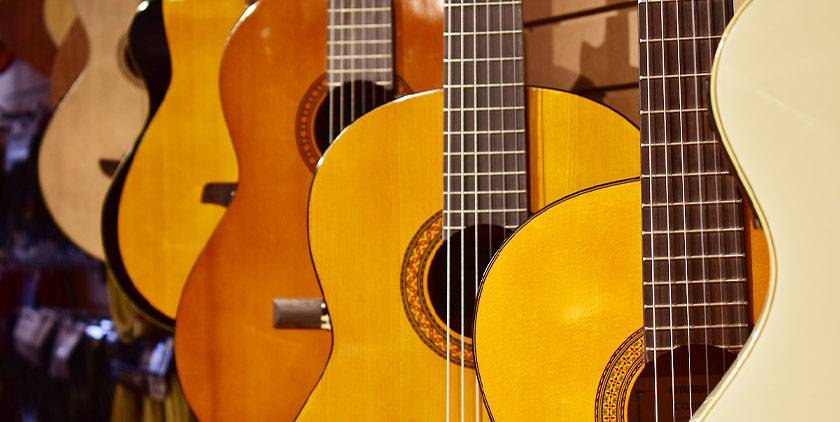
Part 3. Creating a comfortable environment
Now we understand the impact of the environment on musical instruments. So how can you create the optimal environment? I would like to conclude here. However, no special technology is required. Basically, it is optimized by adjusting the temperature within a certain range with an air conditioner and keeping the relative humidity constant with a humidifier or dehumidifier as needed. I think that is the optimal solution at present. There are two types of humidity, "relative humidity" and "absolute humidity", which can be confusing, but you don't have to think about them too hard. Most hygrometers on the market show relative humidity, so unless the temperature is extreme (doesn't exceed 30-35°C or fall below 10°C), summer = if the temperature is high, the humidity should be slightly lower. , Winter = If the temperature is low, the humidity will be a little high, and if you think "I wish I could adjust it by a few percent into the standard range", I think that big problems can usually be avoided.
Another thing to watch out for is that even if it's within the proper range
- Avoid extreme and sudden changes (such as bringing in from a harsh environment (outside summer or winter) and suddenly opening the case)
- Don't let your guard down because you put it in a hard case, don't blow the wind from the air conditioner directly at the instrument
- Do not leave it in a place where it is exposed to direct sunlight and the environment changes drastically, such as near a window.
These areas often said to be the basics.
It is quite difficult to operate the air conditioner and the dehumidifier (humidifier) constantly or actively in terms of electricity costs. However, it is also for long-term and safe use of important instruments, so please practice it as part of daily maintenance in a sense.
※1…Humidity includes “relative humidity (%)” and “absolute humidity (g / m3)”, and in many cases, “humidity” refers to the former. "Relative humidity" is the ratio of water vapor actually present in the air to the amount of saturated water vapor for the temperature. Even with the same humidity of 50%, the amount of water vapor actually contained in a certain volume of air is different. On the other hand, "absolute humidity" refers to the amount of water vapor contained in 1 m3 and temperature is irrelevant.
※2…The ratio to the weight of the same volume of dried wood, with water as 1. Higher is heavier, lower is lighter.







